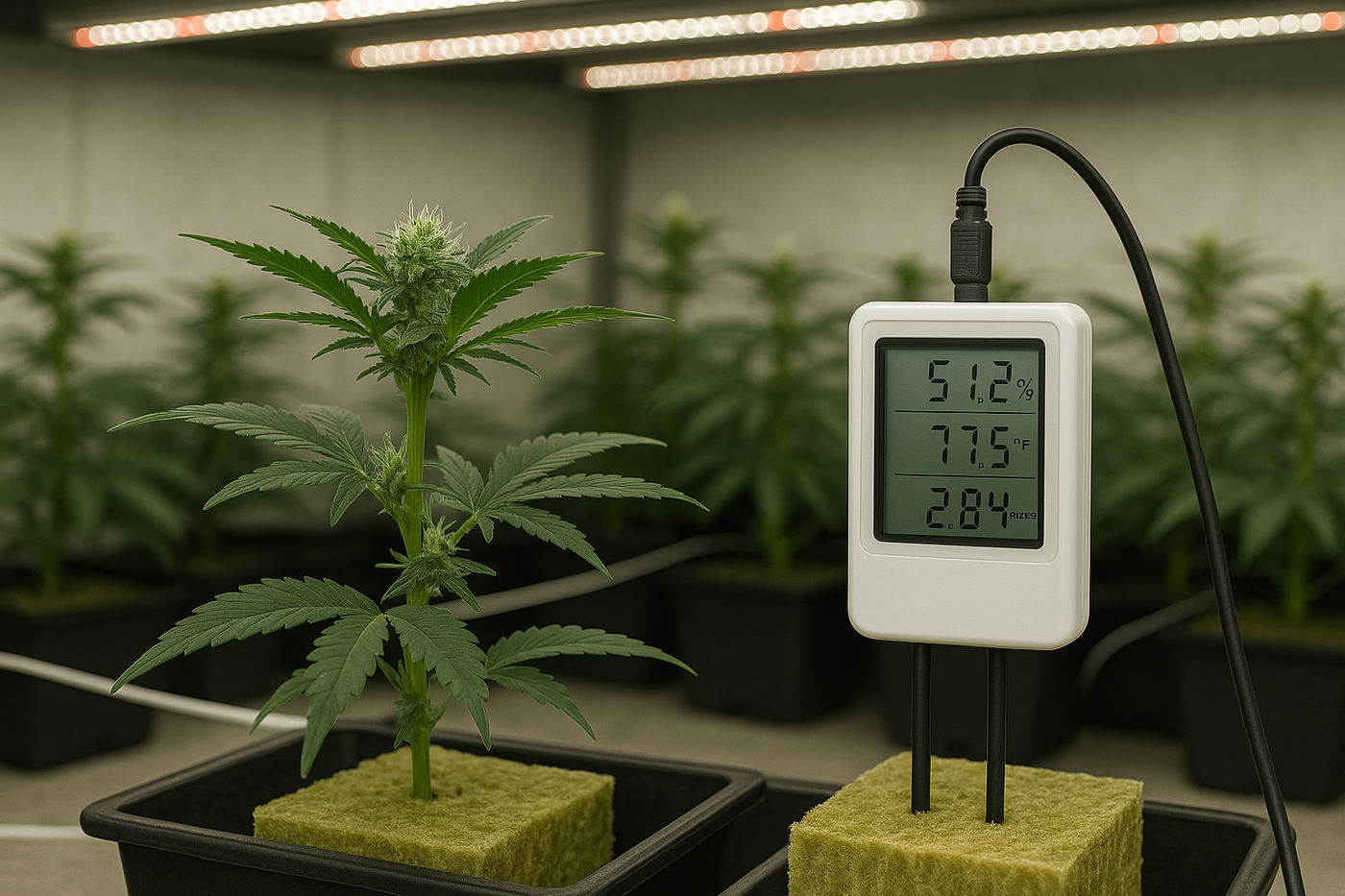Intro to Crop Steering for Cannabis Growers: What It Is and Why It Matters
If you’re a cannabis cultivator looking to get more control over your plants—and boost both quality and yield—crop steering might just be the technique you’ve been missing. While it’s become a staple in commercial cannabis cultivation, crop steering is also a powerful strategy for small-scale and home growers working in indoor or greenhouse environments.
In this post, we’ll break down what crop steering is, how it works in cannabis cultivation, and why it’s becoming an essential part of advanced grow strategies.
What Is Crop Steering in Cannabis?
At its core, crop steering is the practice of using environmental inputs—like irrigation, light, temperature, humidity, and nutrient levels—to influence how your cannabis plants grow. The goal is to "steer" the plant toward either vegetative growth (leaves and branches) or generative growth (flowers and buds), depending on what stage of the grow you’re in.
By making small, intentional changes to your grow environment, you can encourage the plant to behave the way you want—whether that’s bulking up its canopy early on or stacking dense, resin-rich buds during flower.
The Two Types of Crop Steering
1. Vegetative Steering (Early Growth Phase)
Used during the early stages of plant development to build strong stems, roots, and foliage.
- When to use it: During the vegetative stage or the first week of flower (for stretch).
-
How it’s done:
- More frequent irrigation
- Lower EC (nutrient concentration)
- Higher humidity
- Longer photoperiod (in veg)
- Minimal water content fluctuation in your substrate
2. Generative Steering (Flowering Phase)
Used to shift the plant’s focus toward bud development and resin production.
- When to use it: As soon as flowering is triggered and throughout the bloom phase.
-
How it’s done:
- Less frequent irrigation
- Higher EC
- Slightly cooler temps at night
- Controlled water content “dry backs” between irrigations
- Tighter vapor pressure deficit (VPD) control
Why Cannabis Growers Use Crop Steering
Here’s why so many cannabis growers—from home setups to commercial ops—are leaning into crop steering:
- Higher Yields: By timing your steering strategies correctly, plants can put more energy into bud production when it counts.
- Healthier Growth: A strong vegetative phase means sturdier plants that can support heavy flowers later on.
- Better Quality: Enhanced terpene profiles, more resin, tighter bud structure—steering lets you bring out the best in each cultivar.
- Data-Driven Consistency: Especially with sensors and automation, steering gives you predictable results run after run.
- Resource Efficiency: Use less water and nutrients while improving output—especially valuable in commercial environments.
Do You Need Special Equipment to Start Crop Steering?
While many commercial growers use advanced sensors, automation systems, and substrate monitors, you can start crop steering without all the tech.
Even basic practices like adjusting irrigation frequency and measuring EC with a handheld meter can get you started. Keeping a grow log and observing how your plants respond is a key part of developing your skills.
However, if you’re ready to go deeper, tools like:
- Substrate moisture sensors
- Digital irrigation timers
-
VPD calculators or monitors
can take your crop steering game to the next level.
Basic Crop Steering Schedule for Cannabis
Here’s a simplified visual guide to when and how to apply vegetative and generative steering throughout the cannabis grow cycle:
| Phase | Time Frame | Steering Type | Irrigation | EC Level | Humidity | Goal |
|---|---|---|---|---|---|---|
| Vegetative | Week 1–4 (Veg) | Vegetative | Frequent, low volume | 1.2–1.6 | 65–75% | Build structure, leaf mass |
| Early Flower (Stretch) | Week 1–2 (Bloom) | Vegetative → Generative | Gradually reduce frequency | 1.8–2.0 | 60–70% | Support stretch, prep for budset |
| Mid Flower | Week 3–5 (Bloom) | Generative | Less frequent, larger dry-backs | 2.0–2.4 | 55–65% | Trigger bud development |
| Late Flower | Week 6–8+ (Bloom) | Generative | Minimal, target strong dry-backs | 2.2–2.6 | 50–60% | Maximize density, resin, terpenes |
Helpful Tools for Crop Steering
Want to put crop steering into action? Here are a few essentials you might already carry on MonsterGardens.com:
- EC/PPM Meters – Track nutrient strength for precise steering.
- Irrigation Timers – Automate your watering schedule to dial in dry-backs and frequency.
- Humidity Controllers – Adjust and stabilize humidity for each growth phase.
- Substrate Moisture Sensors – Monitor water content in rockwool or coco for tight control.
Crop steering is more than a buzzword—it’s a way to take control of your cannabis grow and get serious about quality and yield. Whether you’re growing a few plants at home or managing a full-scale commercial facility, understanding how to guide your plants with precision is a game changer.
Start simple. Observe. Adjust. Over time, crop steering becomes second nature—and your plants (and harvests) will thank you for it.


